
|

|

|

|

G - a has three odd components.

Take S = ∅ in Tutte's.

ca, rb, de is a 1-factor.

The to end edges, together with the bar of the dumbell form a 1-factor.

Removing the central vertex gives two odd components, so |S| = 1 but o(G - S) = 2. So no 1-factor exists.
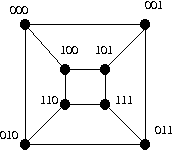
{ (000, 001), (010, 011), (100, 101), (110, 111) }
Removing the part of size three leaves five components of odd size. So |S| = 3 and o(G - S) = 5.

{ (000, 001), (010, 011), (100, 101), (110, 111) }
{ (000, 010), (001, 011), (100, 110), (101, 111) }
{ (000, 100), (001, 101), (010, 110), (011, 111) }
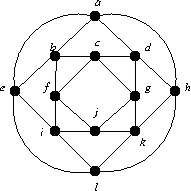
F1 = { (a, d), (h, k), (i, l), (b, e), (c, g), (f, j) }
F2 = { (a, b), (h, d), (e, i), (l, k), (c, f), (g, j) }
F3 = { (a, e), (h, l), (b, c), (d, g), (k, j), (i, f) }
F4 = { (a, h), (e, l), (b, f), (c, d), (g, k), (i, j) }
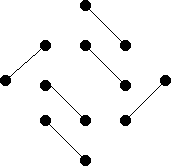
| 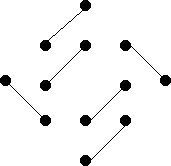
| |
| F1 | F2 | |
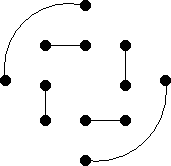
| 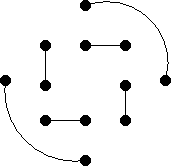
| |
| F3 | F4 | |
Note that Kn,n is an n regular bipartite graph and hence has
a perfect matching (by the Corollary to Hall's Theorem).
Removing this perfect matching yields an (n-1)-regular bipartite graph.
We may proceed in this manner until all edges are used.
Let T be a tree. Since T is a tree it has a vertex of degree 1.
Since T is of order at least 3 it must have at least one vertex of degree greater than 1.
Thus T is not k-regular for any k.
Peter Danziger, April 2008